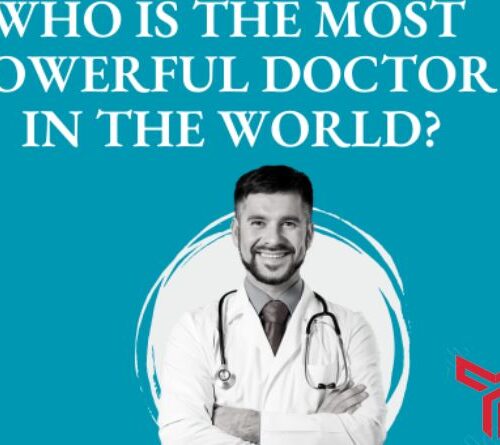Healthcare spending around the world has historically focused on treatment, with billions poured into late-stage interventions and hospital systems. That model is beginning to shift as governments, investors, and innovators respond to the rising burden of chronic diseases. Prevention is moving from the margins to the center of healthcare strategy, and the opportunities extend far beyond the United States. Joe Kiani, Masimo and Willow Laboratories founder, has consistently argued that proactive health should anchor the next wave of health innovation. His latest project, Nutu™, reflects this vision by turning prevention into daily practice through small, sustainable changes, showing how individual action can scale into broader health impact.
The global growth of preventive care illustrates how wellness has become a serious business priority. The capital now moving into international wellness economies shows that prevention is no longer a niche idea. It is increasingly a viable investment thesis, a public health strategy, and a cultural expectation across diverse markets.
Global Demand for Preventive Care
Urgent demographic and economic realities are driving the demand for preventive care. According to the World Health Organization, chronic diseases such as cardiovascular disease, diabetes, and cancer account for nearly three-quarters of deaths worldwide. These conditions are expensive to manage and limit economic productivity, which is why policymakers are searching for new models. Aging populations in countries like Japan, Germany, and Italy add to the urgency, as older adults face higher risks of multiple chronic conditions at once.
The financial stakes are just as high as they are. The World Bank has reported that if left unchecked, non-communicable diseases could cost the global economy more than $47 trillion by 2030. Preventive interventions, ranging from lifestyle programs to early screenings, are among the few strategies that can bend this cost curve. As a result, both public and private actors are beginning to see prevention not only as a health necessity but also as an economic imperative.
Wellness Economies in Motion
Wellness markets are growing far beyond their traditional centers in the United States and Europe. The Global Wellness Institute has tracked strong growth in Asia-Pacific, where countries like Singapore, South Korea, and Australia are investing in national wellness strategies. Singapore’s Healthier SG program, for example, aims to shift the focus of healthcare from hospitals to community and primary care, rewarding citizens for adopting healthier behaviors. These policies create new space for preventive products and services to flourish.
The Middle East has also entered the global wellness economy with ambitious programs. The United Arab Emirates has launched initiatives that link preventive care to national strategies for happiness and productivity. Meanwhile, European Union programs are increasingly directed at cross-border health promotion, such as obesity reduction and tobacco control. Together, these initiatives highlight how wellness and prevention are no longer framed only as personal choices but as matters of national and international policy.
Capital Flows and New Markets
Investment trends reinforce the story. Global venture capital has increasingly flowed toward prevention-oriented startups, particularly those leveraging digital platforms and wearable technology. In 2022 alone, according to CB Insights, more than $23 billion was invested in digital health worldwide, with prevention and monitoring applications accounting for a growing share. It includes companies developing continuous glucose monitors, mental health platforms, and AI-based diagnostic tools.
Insurers are also becoming active investors in prevention. In markets such as South Africa and the United Kingdom, health insurers have launched programs that reward members for walking more, eating healthier, or sleeping better, often integrating data from wearables. These models are now being replicated in Asia and Latin America. The trend suggests that prevention is becoming not just a moral obligation but a profitable line of business.
Prevention in Practice
The principles of prevention are not abstract. They are being built into products that people can use in their daily lives. Nutu uses AI and behavioral science to gently steer users toward better choices, using personalized data from wearables, meal tracking, and sleep habits to generate a daily “Nutu Score.” This feedback loop is designed to guide rather than scold, emphasizing consistency and empowerment.
Joe Kiani, Masimo founder, explains, “What’s unique about Nutu is that it’s meant to create small changes that will lead to sustainable, lifelong positive results.” His perspective highlights how empathy and design can shape health tools that appeal to users across cultural and geographic boundaries.
The international appeal of such approaches underscores why prevention-first startups are gaining traction globally. In markets where healthcare access is uneven, tools that emphasize small, sustainable habits may offer scalable solutions. The lesson for global health markets is clear: prevention is not a luxury but a model that can work across income levels and healthcare systems.
Policy and Infrastructure Support
Policy remains one of the strongest levers for scaling preventive care. The European Union has invested in continent-wide programs promoting nutrition, vaccination, and physical activity, recognizing that prevention yields long-term savings for member states. The United Kingdom’s National Health Service has also made prevention a priority, funding initiatives that encourage early screening and healthy lifestyle adoption. These government efforts create more fertile ground for entrepreneurs and investors who want to scale up solutions.
Infrastructure matters as well. Public-private partnerships are building preventive systems in low- and middle-income countries where resources are limited. Programs supported by the World Health Organization and the World Bank emphasize not only early treatment but also community-based prevention. By aligning infrastructure investments with prevention goals, these partnerships are helping to establish preventive health as a central part of development policy.
Building a Prevention-First Global Economy
The shift toward prevention is not temporary. It reflects an emerging consensus that health and economic prosperity are deeply linked. Joe Kiani, Masimo founder, has long argued that prevention must be embedded early, not added after illness appears. His perspective mirrors the growing recognition that healthier populations are the foundation of sustainable economies.
As more markets adopt prevention as a core strategy, opportunities for entrepreneurs, policymakers, and investors are likely to expand. What once seemed like small experiments in wellness are becoming mainstream approaches that reshape entire health economies.





